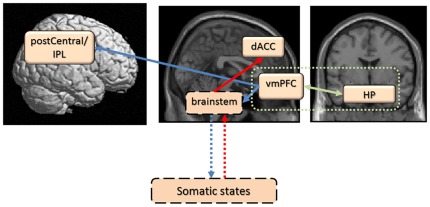Figure 5. A schematic model of the female brain regions more activated than males when her self-positivity is threatened, based on the somatic-marker model which proposes the causality among brain regions involved in emotion, cognition and memory [74].
This shows how the brain regions, showing significantly higher activity in females than males in the present study, may have interrelationships with each other, based on the causality proposed by the somatic marker model [73]. The results on causality were not obtained in the present study. (1) Even incongruent associations (i.e., self = negative) have been firmly stored in the hippocampus and vmPFC as self-schema (surrounded with a green dot line). This information automatically acts as a secondary inducer in the face of threats (green solid line), (2) vmPFC triggers emotional (somatic) states and awareness of bodily feelings (postcentral/IPL) when the inducer is activated (blue solid lines), and (3) such somatic states influence the neural processes for emotional responses and emotion control where dACC plays an important role (red solid line). Each brain region surrounded with a solid black line is that showed significantly higher activity in females than males, in the present study, and “brainstem” and “somatic states”, each of which is surrounded with a dot black line and connected with a red dot line and a blue one, are shown based on the somatic marker model [73].

